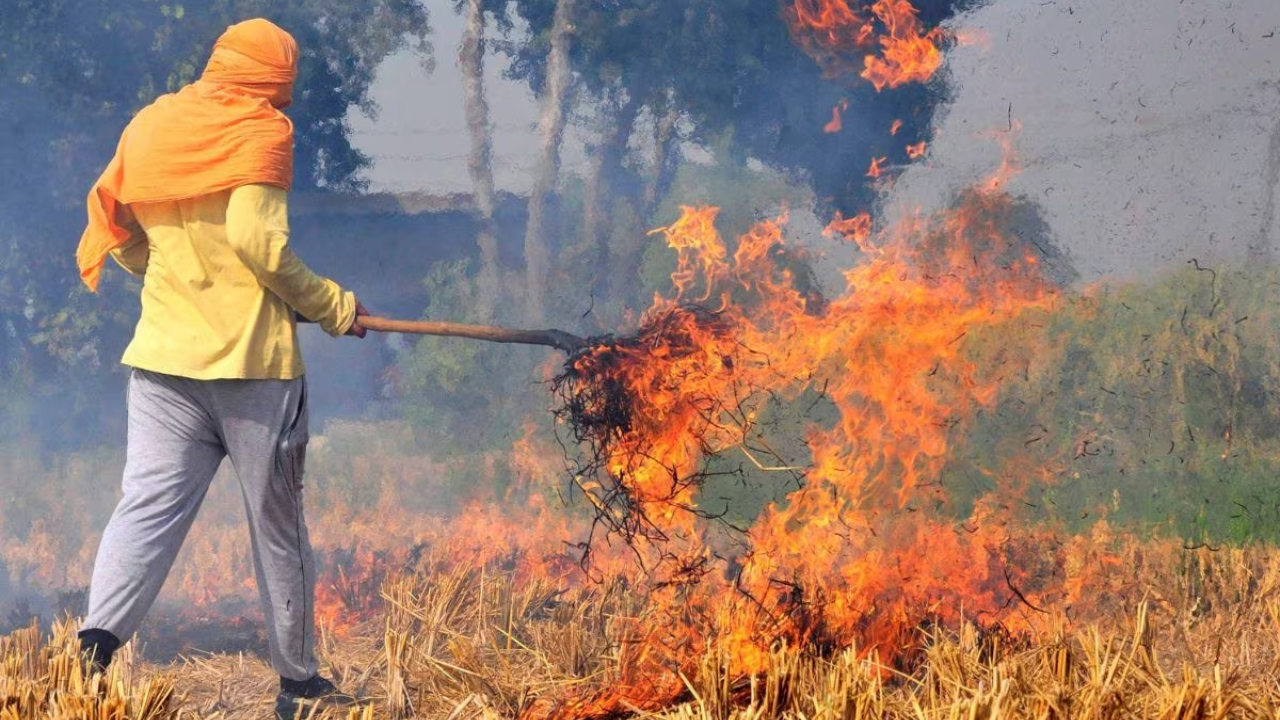In recent times, the air quality in many regions has deteriorated, leaving citizens grappling with the harmful effects of pollution. While the blame often falls on traditional culprits like Diwali crackers, a closer examination reveals that biomass burning may be the true villain behind the surge in air pollution. In this article, we will delve into the evidence that points towards biomass burning as a significant contributor and argue for a more nuanced understanding of the sources of pollution.
The Diwali Myth
Diwali, the festival of lights, has long been accused of exacerbating air pollution issues across India. While it is true that the bursting of firecrackers contributes to temporary spikes in pollution levels, recent studies reveal that blaming Diwali alone is an oversimplification of the problem. Studies indicate that the contribution of fireworks to overall air pollution is relatively small compared to other sources.
The Biomass Burning Menace
Biomass burning, the deliberate ignition of agricultural residues, wood, and other organic materials, has emerged as a significant contributor to air pollution in recent years. Agricultural practices such as crop residue burning, especially in North India, release a cocktail of harmful pollutants into the air, including particulate matter (PM), carbon monoxide, and volatile organic compounds.
The Role and evidence of Crop Residue Burning
Post-harvest, farmers often resort to burning crop residues as a quick and cost-effective method of clearing fields for the next planting season. The combustion of these residues releases large quantities of pollutants into the atmosphere. While the immediate impact is felt locally, the consequences extend far beyond the agricultural fields. Research conducted by environmental scientists consistently highlights the connection between biomass burning and elevated pollution levels. Satellite imagery reveals significant increases in fire incidents during the post-harvest season, aligning with the rise in air pollution levels. Additionally, chemical analysis of air samples often identifies compounds associated with biomass combustion.
Particulate Matter and Respiratory Issues
One of the most concerning pollutants released during biomass burning is fine particulate matter (PM2.5 and PM10). These tiny particles can penetrate deep into the respiratory system, causing a range of health issues, from irritation of the eyes and throat to more severe respiratory diseases. The elderly, children, and individuals with pre-existing respiratory conditions are particularly vulnerable.
Geographical Patterns
An examination of regional pollution patterns further supports the biomass burning hypothesis. Areas with a high prevalence of agriculture and traditional cooking practices tend to experience more pronounced pollution spikes during certain seasons, reinforcing the idea that biomass burning plays a pivotal role.
Carbon Monoxide and Greenhouse Gas Emissions
Biomass burning also releases significant amounts of carbon monoxide (CO) and other greenhouse gases. CO is a colorless, odorless gas that, when inhaled, can interfere with the body’s ability to transport oxygen, leading to adverse health effects. Moreover, the release of greenhouse gases contributes to climate change, impacting weather patterns and exacerbating environmental challenges.
The Need for Sustainable Alternatives
Addressing the issue of biomass burning requires a multifaceted approach. Farmers need access to and awareness of alternative and sustainable practices for crop residue management, such as mulching, plowing, or using crop residues for bioenergy production. Government policies and incentives should encourage the adoption of these practices, thereby reducing the reliance on burning.
Health Impacts
The health implications of biomass burning cannot be overstated. The inhalation of particulate matter and other pollutants released during biomass combustion is linked to respiratory diseases, cardiovascular issues, and an increased risk of certain cancers. Understanding the true sources of pollution is crucial for implementing targeted interventions to safeguard public health.
Public Awareness and Responsibility
While biomass burning is a major contributor to air pollution, the public’s role in curbing pollution cannot be understated. Heightened awareness regarding the environmental consequences of biomass burning, coupled with responsible waste disposal and recycling practices, can contribute to a cleaner and healthier environment.
Rethinking Solutions
To address the pollution crisis effectively, it is essential to shift the focus from narrow scapegoating to comprehensive strategies that tackle multiple sources. Initiatives that promote sustainable agricultural practices, discourage crop residue burning, and provide alternative cooking and heating solutions can significantlwy mitigate the impact of biomass burning on air quality.
Conclusion
While Diwali crackers have been the customary target of environmental criticism, recent pollution spikes demand a more discerning approach. Biomass burning emerges as a major contributor, necessitating a reevaluation of our understanding of air pollution sources. By acknowledging the role of biomass burning behind the recent surge in pollution is the first step toward implementing effective, sustainable solutions we can work towards cleaner air and a healthier environment for all.
The author is the Co-Founder & COO of AutoNxt Automation (https://autonxt.in) India’s First electric tractor venture and an automation technology startup.

